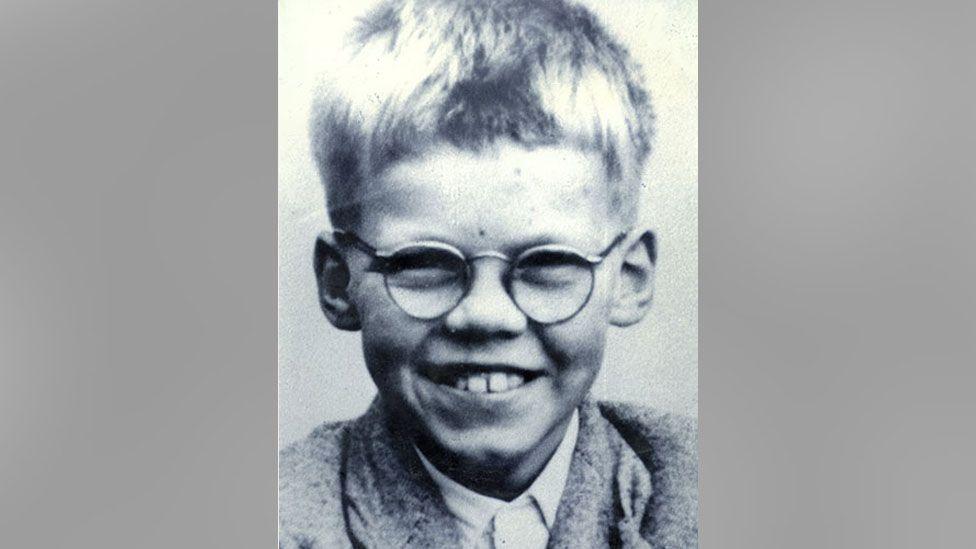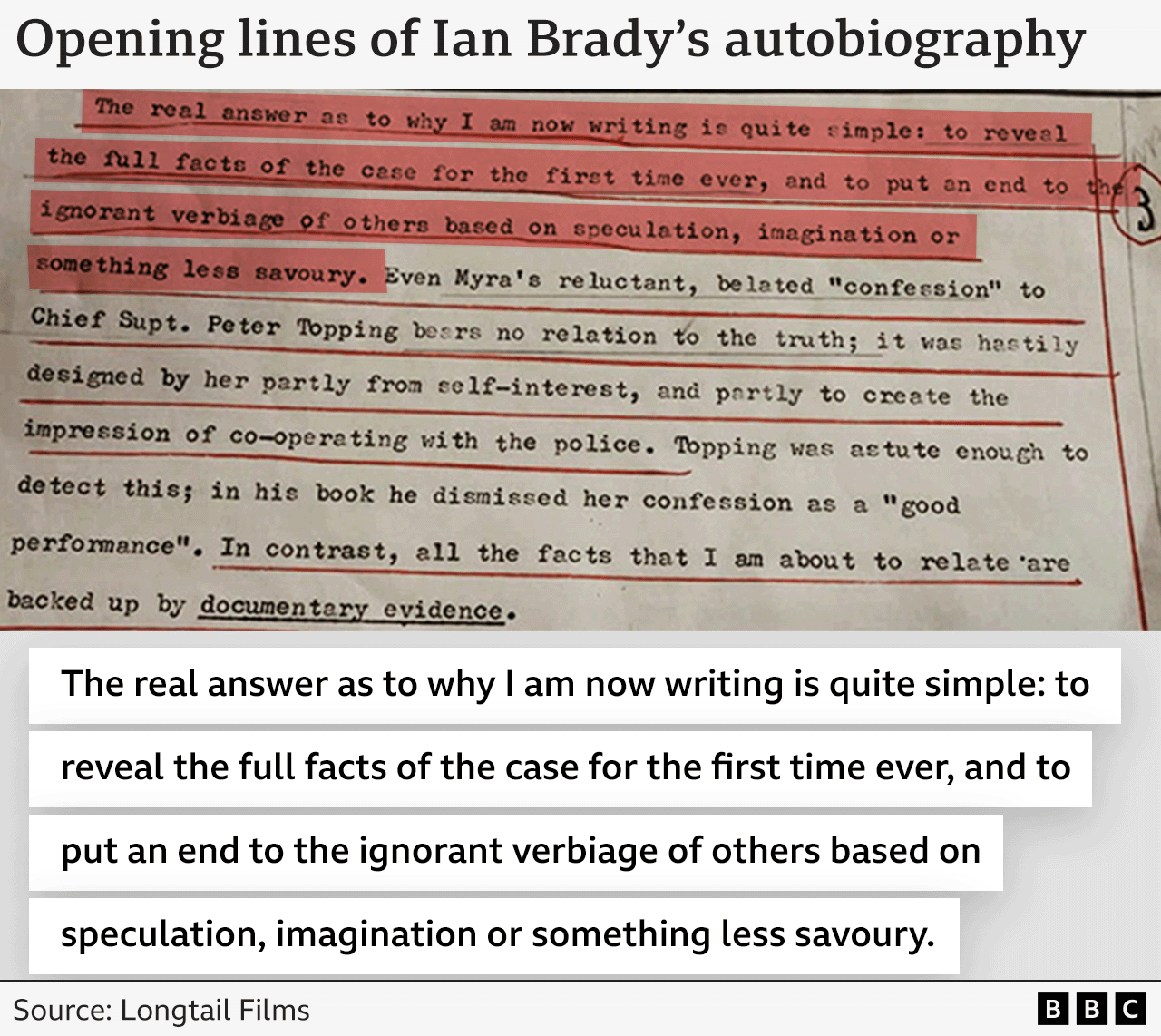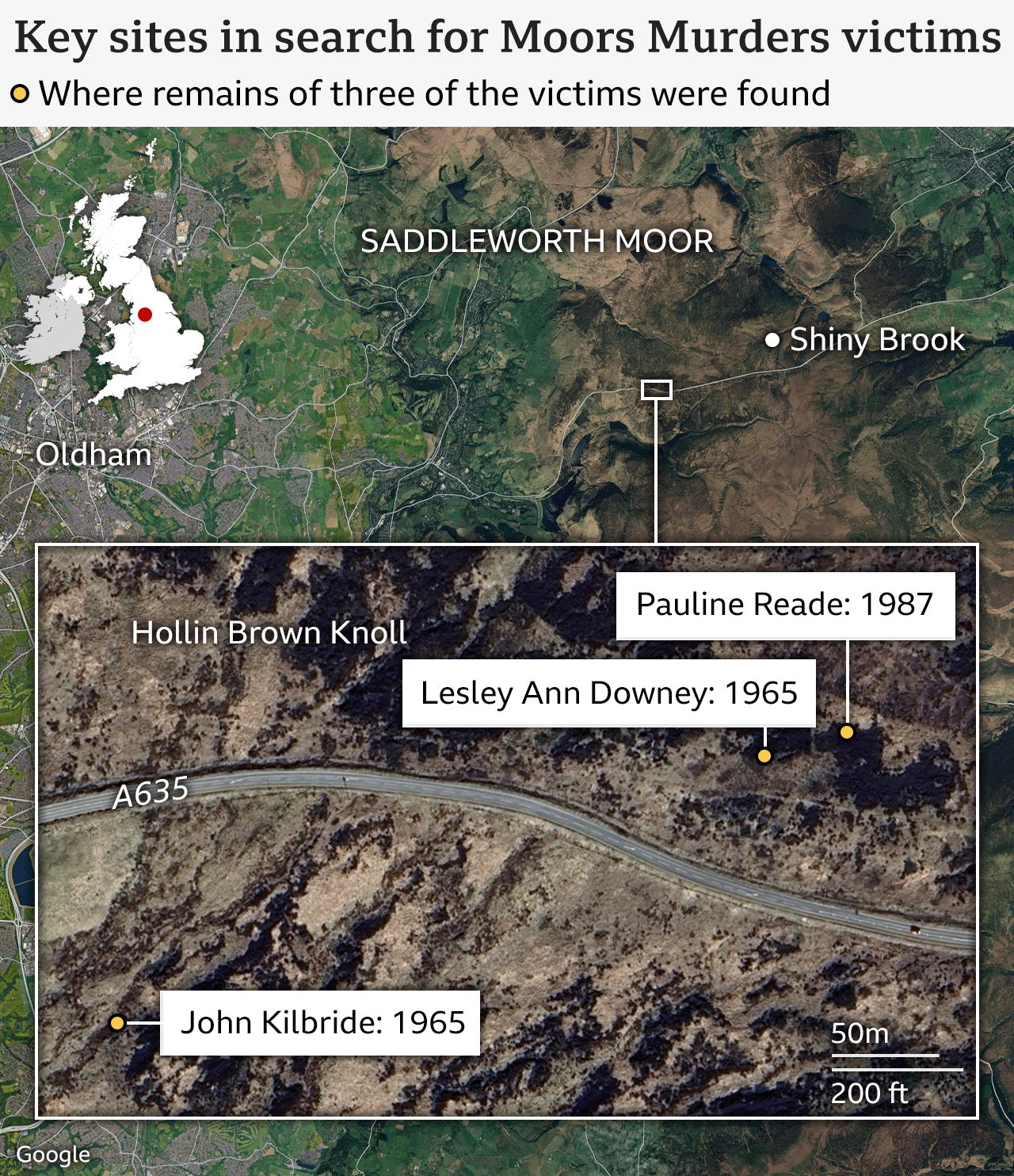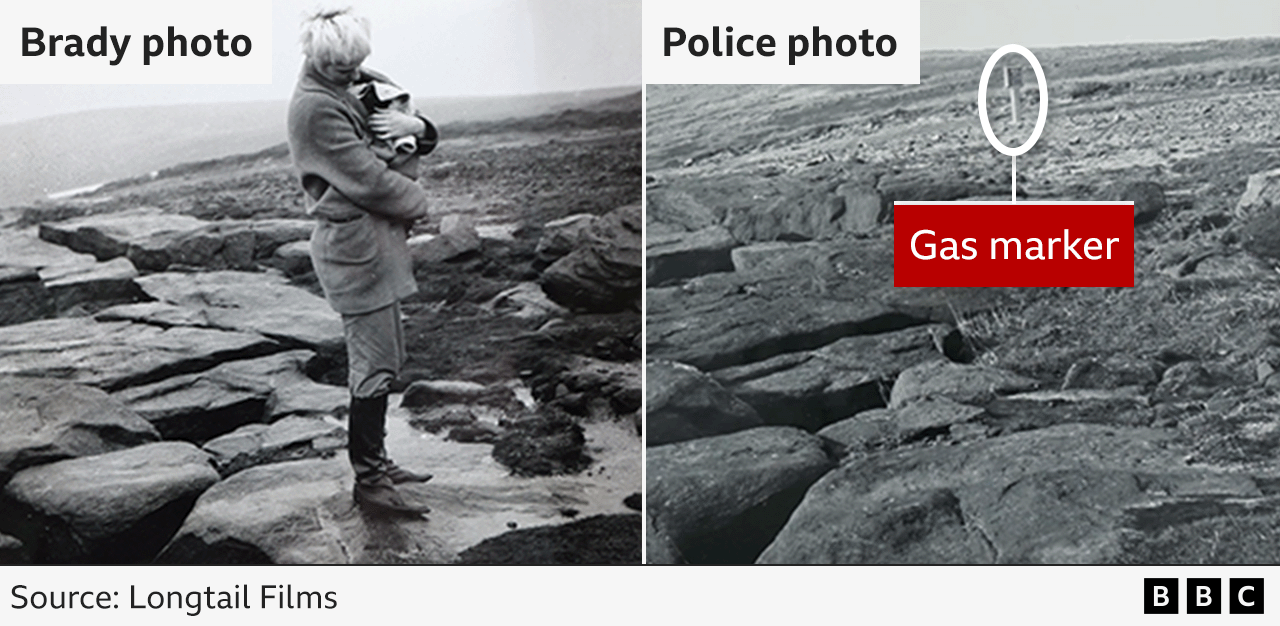Missing Brady memoir 'could hold new clues to Moors murders'

Ian Brady pictured in a police car on his way to court in 1966
- Published
Missing pages from an autobiography written by Moors murderer Ian Brady could throw new light on where his final missing victim is buried, according to a new BBC documentary.
The last 200 pages of Brady's manuscript may contain his account of 12-year-old Keith Bennett's murder and burial in 1964, it is claimed. They are believed to have been deposited with Brady's solicitor, but he has not commented.
Bennett's brother, Alan, has called for any missing material to be made available to police, because it could contain "vital information in regard to the search for Keith". He was kept informed of the discovery by the makers of The Moors Murders - A Search For Justice.
In a separate development, defence files from the trial of Brady and his accomplice, Myra Hindley, have recently been rediscovered by the journalist and author presenting the documentary, Duncan Staff. Photos contained within these files have raised fresh questions about the search for the victims.
Brady and Hindley achieved infamy in the 1960s as the Moors murderers - so-called because they buried four of their five young victims on Saddleworth Moor, north-east of Manchester.
The gruesome details of their crimes have retained a dark grip on the public imagination ever since.

Keith Bennett was murdered in 1964 but his body has never been found
Brady and Hindley were jailed in 1966 for torturing and killing three children - Lesley Ann Downey, 10, John Kilbride, 12, and Edward Evans, 17. Twenty-one years later, they also confessed to murdering Pauline Reade, 16, and Keith Bennett - crimes of which they had long been suspected.
Reade's body was found on Saddleworth Moor in 1987, but Bennett has never been found.
Brady died in 2017, aged 79. Shortly afterwards, theologian Alan Keightley, published a book about the killer, based on hours of interviews with him at Ashworth Special Hospital.
Keightley himself died in 2023, but his widow, Joan, has given the documentary-makers access to her late husband's extensive archive. This includes an incomplete copy of a typed manuscript titled "Black Light", which Brady appears to have written.
Keightley writes in his own book that Brady told him "Black Light" was at least 600 pages long. The copy in his own archive stops abruptly at page 394, shortly before the murder of John Kilbride, Brady and Hindley's second victim.
The autobiography contains a detailed description of where the murderers buried their first victim, Pauline Reade: "We counted the paces back to a rock on the knoll in order to be able to find the site and photograph it at a future date."
If similar detail has been included for Keith Bennett, it would provide vital information about where his body is buried, says the new documentary.

Keightley wrote in his book that Brady once asked him to deliver a "double sealed parcel", which he assumed to contain the autobiography, to a solicitor in London.
This solicitor, Benedict Birnberg, died in 2023. His firm told the BBC that any material left with them had now been sent to Brady's other solicitor, Robin Makin, in Liverpool.
The BBC approached Makin to comment about whether he was in possession of the autobiography, but he has not responded.
The Moors Murders - A Search For Justice
Author and film-maker Duncan Staff examines past investigations, rediscovered files and archives from the Moors murders case, to tackle questions that have remained unanswered for nearly 60 years.
Watch on iPlayer now - or on BBC Two on Wednesday 30 July at 21:00 (Part 2 on BBC Two, Wednesday 6 August at 21:00)
The Bennett family's lawyer asked the documentary-makers to let the police know about "Black Light".
Greater Manchester Police initially said it wanted to see a large amount of material gathered for the programme, but then abruptly changed its mind.
In a statement, it told the BBC: "We will carefully consider and respond, in a timely and professional manner, to any credible evidence shared with us that may lead us towards finding Keith."
Photographic clues?
Many of the original defence case papers from Brady and Hindley's trial, now held by documentary-maker Duncan Staff and his team, have not been made public before.
The files, kept for decades by one of the defence lawyers, include interview logs, notes written by Hindley during police interviews, and photographs taken by Brady on Saddleworth Moor.
During the initial police investigation, it was believed the photos contained clues - and Hindley confirmed in interviews with Staff in the 1990s that Brady had taken them to remember where the bodies were buried.
In one shot, Hindley is seen crouching on a rock, cradling her dog, in an area known as Hollin Brown Knoll. This was later discovered to be the exact spot where John Kilbride was buried. The bodies of Lesley Ann Downey and, much later, Pauline Reade, were also found nearby.

In this photograph taken by Ian Brady, Myra Hindley crouches above the spot where their second victim, John Kilbride, was buried
In the case of Keith Bennett, Hindley and Brady later claimed he had been murdered and buried a mile or so further east in Shiny Brook, an area where Brady also took photographs. But a police search there found nothing.

The significance of some of the other photos from Hollin Brown Knoll remains "troubling", according to forensic archaeologist Prof John Hunter.
In one, Hindley is standing on rocks, once more holding her dog. Her pose completely, and maybe deliberately, obscures a gas pipeline marker behind her.
The marker's presence is revealed in a police photo, newly found in the defence files, that was taken at the same spot.
These images may be important, according to Prof Hunter, because there is no obvious connection to any of the known burial sites.
Geoff Knupfer, a former police officer who worked on the case in the 1980s, says he was told that, during the original investigation, it was "thought [Bennett] could have been disposed of within the trench of the pipeline".
He adds this possibility had not been explored because digging up the pipeline was thought to be "far too expensive".

Brady's photo of Hindley (left) is posed to hide the gas marker behind her; a recently found police photo taken at the same spot reveals its presence
Knupfer says there was a decision "taken at some level within the [police] service or the Home Office" to stop searching for the missing bodies once Hindley and Brady were convicted of three of the five murders.
"I don't want to criticise former colleagues too much," he says, "but it's all very well and good if it's not your children who are missing."
For the families, says Staff, the lack of action has left them with a "constant enduring pain".
"They could have raised money, they could have done something," Pauline Reade's niece, Jackie, tells the documentary. "There was no need for them to stop searching."
One officer is said to have been so upset by the decision to call off the hunt for bodies that he returned with sniffer dogs to make an unauthorised search of the area.
"I can see why [the police] thought, 'This is really tough, we're going to let it go'," explains Staff in the documentary. "But do I think that was the right decision? Well, deep down, no, I don't."
Greater Manchester Police says it remains committed to finding answers for the Bennetts: "Keith's family is central to any action we take in relation to this case and our thoughts remain with them."

Get our flagship newsletter with all the headlines you need to start the day. Sign up here.